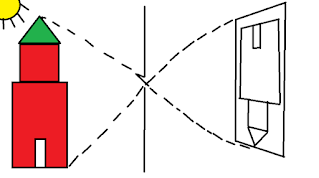To fully know the history of holograms, one must first comprehend the definition of a hologram.
What is Hologram?
Light is an electromagnetic wave. Holography takes advantage of the fact that light is a wave. Unlike a traditional photograph, which uses a lens to focus an image on an electronic chip or a piece of film and simply records where there is light or no light, holography records the shape a light wave takes after it bounces off an object, similar to the impression left by pressing a key into clay. It uses interfering light waves to capture completely three-dimensional images. Light waves interact in the same way as water waves do when they encounter example - Water ripples when the stone hits the water surface of the pond.
The History -
True three-dimensional holograms, as we know them today, did not become a practical reality until the advent of the LASER. A laser produces pure light pulses that march in lockstep like a marching band. Coherent waves are described as such. Holography's light wave interference patterns may be recorded using coherent light. In 1917, Albert Einstein proposed the "Stimulated Emission" theory, which explains how lasers work. The laser was initially proposed by Arthur Shawlow and Charles Townes, who worked at Bell Labs in Murray Hill, NJ, in 1958. Theodore Maiman invented the first practical ruby laser in 1960 while working at Hughes Research Laboratories in Malibu, California. Ali Javan, who developed the first gas laser, the Helium-Neon laser, at Bell Labs in December 1960, was a close second. Robert Hall invented the semiconductor injection laser, which is today known as laser diodes while working at General Electric laboratories in Schenectady, New York. However, based on his 1957 concept, the US Invention Office awarded Gordon Gould, a doctoral student at Columbia University under Charles Townes, the fundamental patent for the laser in 1977. In 1957 US Patent Office gave Gordon Gould, a Ph.D. student at Columbia University under Charles Townes, the fundamental patent for the laser. But he didn't apply for the patent until 1959, on the basis of dreadful legal advice, but after 20 years he eventually won the court battles. And he became the one to coin the word "LASER" (Light Amplitude by Stimulated Emission of Radiation).
Holography existed long before the invention of the laser. Gabriel Lippmann devised a notion of exploiting light wave interference to capture color in photography in 1886 in France. He covered glass photographic plates with mercury to function as a mirror, bouncing light waves back through the emulsion and causing wave interference. He submitted this hypothesis to the Academy of Sciences in 1891, along with some crude examples of his interference color photos. In 1893, he was able to provide the Academy with beautiful color images taken by the Lumière brothers. He finally published his entire hypothesis in 1894. This work earned Lippmann the Nobel Prize in Physics in 1908.
Lippmann, like Einstein, who struggled in school at times, and Edison, who was deemed mentally ill by his teacher and expelled, had not been an exceptional student. He had shirked jobs that he didn't enjoy. He actually failed the exam that would have allowed him to work as a teacher.
Wave interference color photos, invented by Lippmann, were the forerunners of holograms. Color dies were not available. The diffraction of light into its fundamental hues caused the colors to appear. In a similar way to holograms, you'd have to hold the film at precisely the proper angle to the light to see the pictures.
In 1915, at 15 years old, Dennis Gabor, a Hungarian, became keen on physical science having concentrated on crafted by Gabriel Lippmann. Like Lippmann, Gabor was Jewish. In 1933, with Hitler's ascent to control, Gabor needed to escape to England to get away from the strict oppression of the Nazis. Once in England, he worked at British Thompson-Houston Research Laboratories in Rugby. While endeavoring to further develop the settling force of the electron magnifying lens to make it proficient to see single particles, he, fortunately, happened upon his hypothesis of wavefront remaking. He named it holography in view of the Greek words holos for entire and graphe for the message. In 1971, Gabor was granted the Nobel Prize in Physics for his hypothesis of holography.
In the former Soviet Union, Yuri Denisyuk read Lippmann's description of impedance photography and realized it might be used to capture three-layered images. Because the laser didn't exist at the time, he began his research in 1958 with a deeply separated mercury release tube as his light source. In 1962, he distributed his work in the Soviet Union, where he received harsh criticism. These were the first three-layered reflection visualizations, though. Denisyuk was unaware of Gabor's efforts. During our conversation, Denisyuk revealed that his superiors held him in low esteem and had little trust in his holographic work. Things began to change for him when a group of American scholars wanted to meet with him. After it was found that the westerners esteemed his work very much so he got his private lab to work further on holograms. In 1958, while working on an esoteric radar research project, Emmett Leith recreated holography on his own, having never heard of Gabor. It took until 1961 for his work to be published. He and his helper Juris Upatniks made their work in three-dimensional laser transmission holography public with the creation of the Helium-neon laser. They were unaware of Denisyuk's work.

1 Comments
___________________________________________________
sell laptop near me